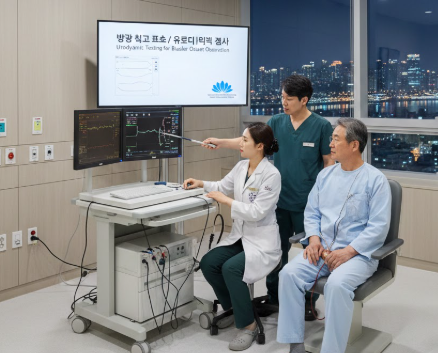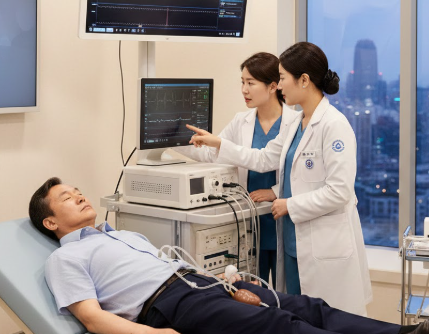Treatment Overview
Korean Fibroid Laser Removal Surgery represents a groundbreaking advancement in minimally invasive gynecologic care. This surgical approach utilizes laser technology to excise uterine fibroids with unmatched precision, minimal blood loss, and rapid recovery times. Korea is globally recognized for combining state-of-the-art surgical innovation with highly skilled gynecologic specialists, offering patients a safe, effective, and patient-centered option for fibroid treatment.
Uterine fibroids — benign muscular tumors of the uterus — affect a large proportion of women worldwide. These growths can cause heavy menstrual bleeding, pelvic pain, infertility, and pressure symptoms affecting bladder or bowel function. Laser fibroid removal in Korea addresses these issues through high-precision technology that minimizes collateral tissue damage, preserves uterine health, and promotes faster healing.
Leading Korean hospitals such as Samsung Medical Center, Asan Medical Center, Severance Hospital, CHA Bundang Women’s Hospital, and Ewha Womans University Mokdong Hospital offer this treatment. Surgeons combine advanced laser systems with laparoscopic techniques, ultrasonic guidance, and precision surgical planning to deliver optimal results.
Purpose & Benefits
The primary purpose of Korean fibroid laser removal surgery is to provide safe, precise, and fertility-preserving treatment for symptomatic uterine fibroids. Laser technology offers unparalleled control and accuracy, allowing surgeons to remove fibroids while minimizing disruption to healthy uterine tissue.
Key benefits include:
- Precision Surgery: Laser systems allow highly targeted removal of fibroid tissue while sparing healthy tissue.
- Minimized Blood Loss: Laser energy seals blood vessels during excision, reducing intraoperative bleeding.
- Faster Recovery: Minimally invasive laser surgery enables a quicker return to daily activities.
- Fertility Preservation: The uterus is preserved to maintain reproductive potential.
- Reduced Postoperative Pain: Laser surgery causes less trauma and discomfort.
- Minimal Scarring: Laser excision reduces incision size and improves cosmetic outcomes.
- Short Hospital Stay: Most patients return home within 24–48 hours.
This approach reflects Korea’s reputation for combining advanced technology with patient-focused surgical care.
Ideal Candidates
Korean fibroid laser removal surgery is suitable for women who require precise, minimally invasive fibroid treatment. Ideal candidates include:
- Women with symptomatic fibroids causing heavy menstrual bleeding, pelvic pain, or pressure symptoms.
- Patients with fibroids of various sizes and locations requiring targeted removal.
- Women who wish to preserve fertility and maintain uterine health.
- Patients preferring minimally invasive surgery over traditional open procedures.
- Women seeking rapid recovery and advanced surgical care.
Preoperative evaluation in Korean hospitals includes high-resolution ultrasound, MRI, and laboratory testing to design an optimal surgical plan tailored to the patient’s needs.
Possible Risks & Complications
Fibroid laser removal is generally safe, but patients should be aware of potential risks:
- Bleeding: Rare due to laser coagulation, but possible in certain cases.
- Infection: Low risk with sterile surgical protocols.
- Adhesion Formation: Reduced with minimally invasive laser surgery but still possible.
- Injury to Surrounding Organs: Rare due to precision laser guidance.
- Fibroid Recurrence: Possible, although complete removal reduces risk.
Korean surgeons mitigate risks through meticulous planning, advanced surgical technology, and structured postoperative care.
Techniques Used
Korean fibroid laser removal surgery combines several cutting-edge techniques to maximize accuracy and safety:
- Laparoscopic Laser Myomectomy: Combines laparoscopy and laser excision for minimally invasive treatment.
- Ultrasonic Guidance: Real-time imaging ensures precise localization and removal of fibroids.
- Energy-Based Laser Systems: Seal blood vessels and minimize collateral damage.
- Single-Port Laser Surgery: Minimizes incisions for faster recovery and improved cosmetic results.
- Precision Suturing: Restores uterine integrity to preserve reproductive function.
These advanced techniques ensure a tailored approach for each patient, maximizing safety and outcomes.
Recovery & Aftercare
Recovery after Korean fibroid laser removal surgery is typically fast and comfortable. Most patients resume normal activities within 1–2 weeks, experiencing less pain and scarring compared to traditional surgery.
Postoperative care includes:
- Monitoring of healing progress and uterine health.
- Tailored pain management.
- Guidance on diet, activity, and lifestyle adjustments.
- Fertility counseling for women planning pregnancy.
- Follow-up imaging to detect recurrence and confirm complete recovery.
Korean hospitals emphasize a comprehensive aftercare process to ensure optimal results and long-term well-being.
Results & Longevity
Laser fibroid removal offers long-lasting relief from symptoms, preservation of reproductive health, and minimal postoperative discomfort. Korean hospitals report high patient satisfaction rates and reduced fibroid recurrence with this precision approach.
Long-term studies suggest that laser-assisted fibroid removal can significantly improve quality of life and reproductive outcomes while minimizing recovery time and surgical complications.
Treatment Process in Korea
- Consultation: In-depth assessment of symptoms, medical history, and imaging.
- Preoperative Planning: Customized laser surgical plan based on fibroid size, location, and patient goals.
- Surgical Procedure: Minimally invasive laser-assisted excision of fibroids.
- Recovery: Structured postoperative care and guidance for quick healing.
- Follow-Up: Imaging and consultations to ensure uterine health and monitor for recurrence.
Korean hospitals ensure a streamlined, patient-centered process that prioritizes safety, precision, and comfort.
Cost Range
The cost of Korean fibroid laser removal surgery varies depending on the complexity of the procedure and the hospital:
- Laparoscopic Laser Myomectomy: ₩7,000,000 – ₩12,000,000 KRW ($5,200 – $9,000 USD)
- Robotic-Assisted Laser Myomectomy: ₩10,000,000 – ₩15,000,000 KRW ($7,500 – $11,300 USD)
- Single-Port Laser Surgery: ₩8,500,000 – ₩14,000,000 KRW ($6,400 – $10,500 USD)
These prices reflect Korea’s advanced surgical capabilities, cutting-edge technology, and world-class patient care.
Popular Clinics for Korean Fibroid Laser Removal Surgery
- Samsung Medical Center – Pioneers in minimally invasive laser-assisted gynecologic surgery.
- Asan Medical Center – Experts in precision laparoscopic and robotic laser myomectomy.
- Severance Hospital – Known for fertility-preserving laser fibroid removal.
- CHA Bundang Women’s Hospital – Leaders in customized minimally invasive laser surgery.
- Ewha Womans University Mokdong Hospital – Integrates innovative technology with comprehensive patient care.




